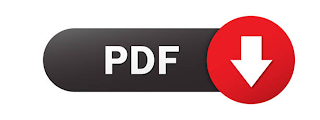What is meant by purchase order? | What is meant by a PO?
A purchase order or PO is
an official document issued by a buyer to pay a seller for the sale of
specified products or services in a future delivery. By using a Purchase order buyers
have an advantage in the possibility of placing an order without immediate
payment.
The process involved in issuing
Purchase Order
The purchase order is in
the procurement process part which gives confirmation and specification of the
actual need for goods or services before beginning the purchase. This also
includes payment processing and auditing results.
1. Purchase Requisition
(PR) Creation.
The requester creates a
document to obtain permission to proceed with the purchase. It may be amended
or added to or revoked before approval is obtained.
2. PO Issuing
Once PR Purchase Requisition is approved, PO can be made
after prices, delivery, terms, and conditions are agreed upon. For large
purchases (Based on the PO value), companies usually issue an RFP-Request for
proposal to their preferred suppliers. Some level of financial authority is
required to sign off on the purchase before placing the order.
The PO is usually delivered electronically to the
selected supplier.
3. Supplier approves the PO
After the Supplier checks on
details that are incorrect or unacceptable, and Supplier may request corrections.
The supplier then approves the revised Purchase order-PO, if necessary, generally
supplier will approve the PO via email or using an e-procurement platform.
4. Purchaser records and files the PO and looks for
delivery
After the product is delivered or the service completed,
the purchaser/company reviews the purchase to see if it meets the acceptable
standards mentioned in PO. Where goods are recorded in the material inward
register. The services will usually be signed off for supplied satisfactorily.
5. Approval and payment
Once the invoice is
received, it will be applied to the PO. If everything is correct, the invoice
will be paid according to the agreed payment terms.
Advantages and
disadvantages of the Purchase order - PO
Advantages of Purchase
order
- Duplicate orders are avoided
- Surprise invoices are avoided
- Incoming orders tracking management
- Improvement in the accuracy of financial and inventory
- Helps with auditing requirements
- Inventory management
- Catch unexpected price hikes
- Delivery times are improved or even speed up, as POs
help to schedule delivery for whenever
the buyer needs it
- Act as legally binding documentation
- Have clear communication between vendors and buyer
- Smarter budget: procurement teams can only purchase with
available funds, which requires approval
However, it’s important to
assess your company’s specific needs before introducing a purchase order system
as there’s an administrative downside to using POs.
Disadvantages of Purchase
order
It creates additional paperwork and is time-consuming which
can be annoying for smaller purchases by a smaller team
(Note that if a business uses credit cards for
purchases, POs can simplify the credit card reconciliation process for the
accounting team.)
Purchase Order Template
Click here to download
FAQ
What is the difference
between a purchase order and an invoice?
The difference between a purchase order and an invoice
is that a purchase order is issued by the buyer and must be executed by the
seller or vendor, whereas an invoice is issued by the seller or vendor after
execution of the purchase order and must be paid by the buyer.










No comments:
Post a Comment